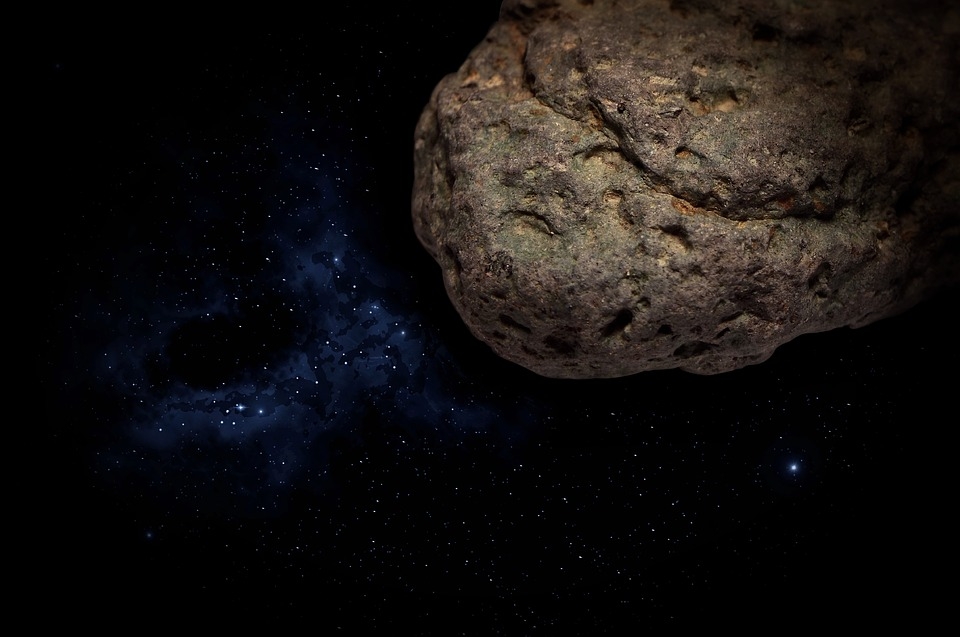Another asteroid was spotted traveling Earthbound and is set to approach our planet this week. With a size that is comparable to two times as large as the statue of liberty in the US, would it pose a threat to Earth?
NASA has detected an asteroid, formally referred to as 2020 PM7 traveling through space and is set to approach Earth tomorrow, September 29. 2020 PM7 measures around 200 meters in diameter, described as more than twice the size of the Statue of Liberty. The asteroid is currently hurtling through space at a speed of 8.3 kilometers per second or around 29,880 kilometers per hour. Despite its large size, the agency has classified it as a Near-Earth Object or NEO.
Fortunately, 2020 PM7 will not pose a threat to Earth when it approaches on the 29th of September. PM7 will only get as close a 2.8 million kilometers away from Earth, which is seven times the distance between our planet and the Moon. This is still extremely far by our standards, but this is already close enough for space agencies to spot and monitor for any unusual activity and for further understanding of our own solar system.
With the very minor chance of an asteroid collision, space agencies like NASA and the ESA have already taken measures in developing a method of planetary defense.
Meanwhile, NASA is making progress with the ongoing Osiris-REx Bennu mission. Astronomers at the US-based agency have revealed that they are now close to a historic moment. The moment comes as in over the coming weeks, the unmanned spacecraft will make a landing on the surface of Bennu for only a few seconds to collect a sample.
This will be the first time NASA has taken an asteroid sample, which will be sent back to Earth for further analysis. The descent will take place on October 20, and is the first attempt to “touch and go” in collecting a sample. The first attempt will bring the spacecraft to a part of the asteroid called “Nightingale,” a rocky region that is 52 feet across the asteroid Bennu’s northern hemisphere.



 Dark energy is one of the biggest puzzles in science and we're now a step closer to understanding it
Dark energy is one of the biggest puzzles in science and we're now a step closer to understanding it  Archeoastronomy uses the rare times and places of previous total solar eclipses to help us measure history
Archeoastronomy uses the rare times and places of previous total solar eclipses to help us measure history  Could a telescope ever see the beginning of time? An astronomer explains
Could a telescope ever see the beginning of time? An astronomer explains  How do airplanes fly? An aerospace engineer explains the physics of flight
How do airplanes fly? An aerospace engineer explains the physics of flight  Why some people don't trust science – and how to change their minds
Why some people don't trust science – and how to change their minds  Orbital resonance − the striking gravitational dance done by planets with aligning orbits
Orbital resonance − the striking gravitational dance done by planets with aligning orbits  Why is the universe ripping itself apart? A new study of exploding stars shows dark energy may be more complicated than we thought
Why is the universe ripping itself apart? A new study of exploding stars shows dark energy may be more complicated than we thought  Larger and more frequent solar storms will make for potential disruptions and spectacular auroras on Earth
Larger and more frequent solar storms will make for potential disruptions and spectacular auroras on Earth  Six space missions to look forward to in 2024
Six space missions to look forward to in 2024  The rising flood of space junk is a risk to us on Earth – and governments are on the hook
The rising flood of space junk is a risk to us on Earth – and governments are on the hook  A Nasa rover has reached a promising place to search for fossilised life on Mars
A Nasa rover has reached a promising place to search for fossilised life on Mars  The brightest object in the universe is a black hole that eats a star a day
The brightest object in the universe is a black hole that eats a star a day  Genetic diseases: How scientists are working to make DNA repair (almost) a piece of cake
Genetic diseases: How scientists are working to make DNA repair (almost) a piece of cake  Our survey of the sky is uncovering the secrets of how planets are born
Our survey of the sky is uncovering the secrets of how planets are born  The mystery of consciousness shows there may be a limit to what science alone can achieve
The mystery of consciousness shows there may be a limit to what science alone can achieve  Dark matter: our new experiment aims to turn the ghostly substance into actual light
Dark matter: our new experiment aims to turn the ghostly substance into actual light 































